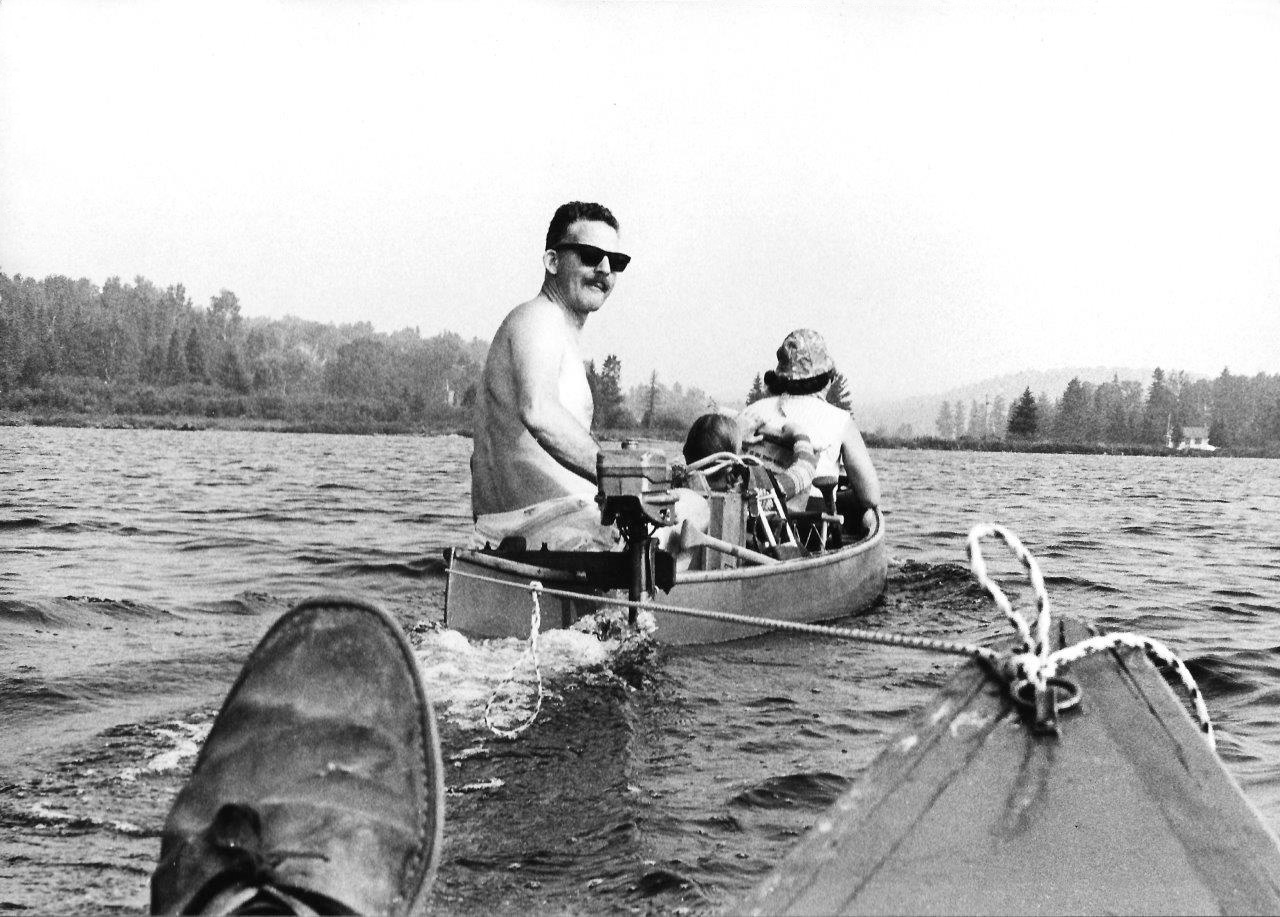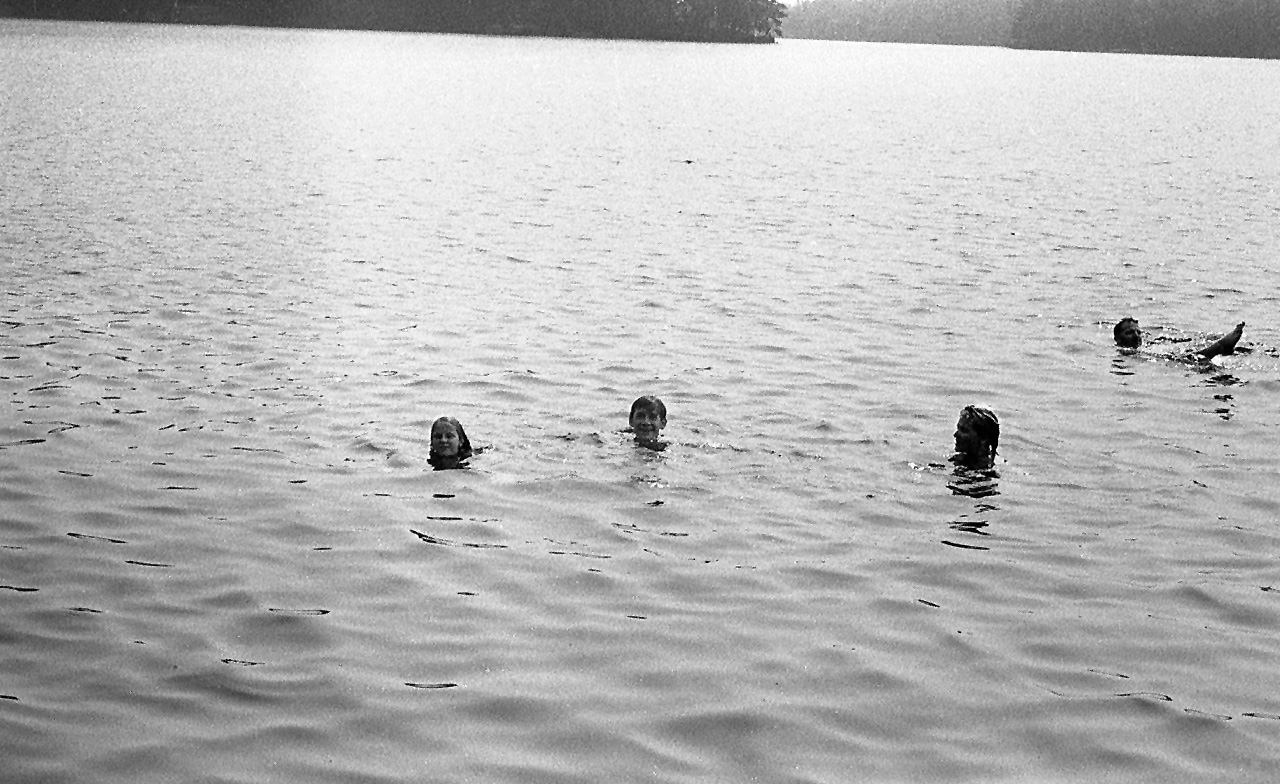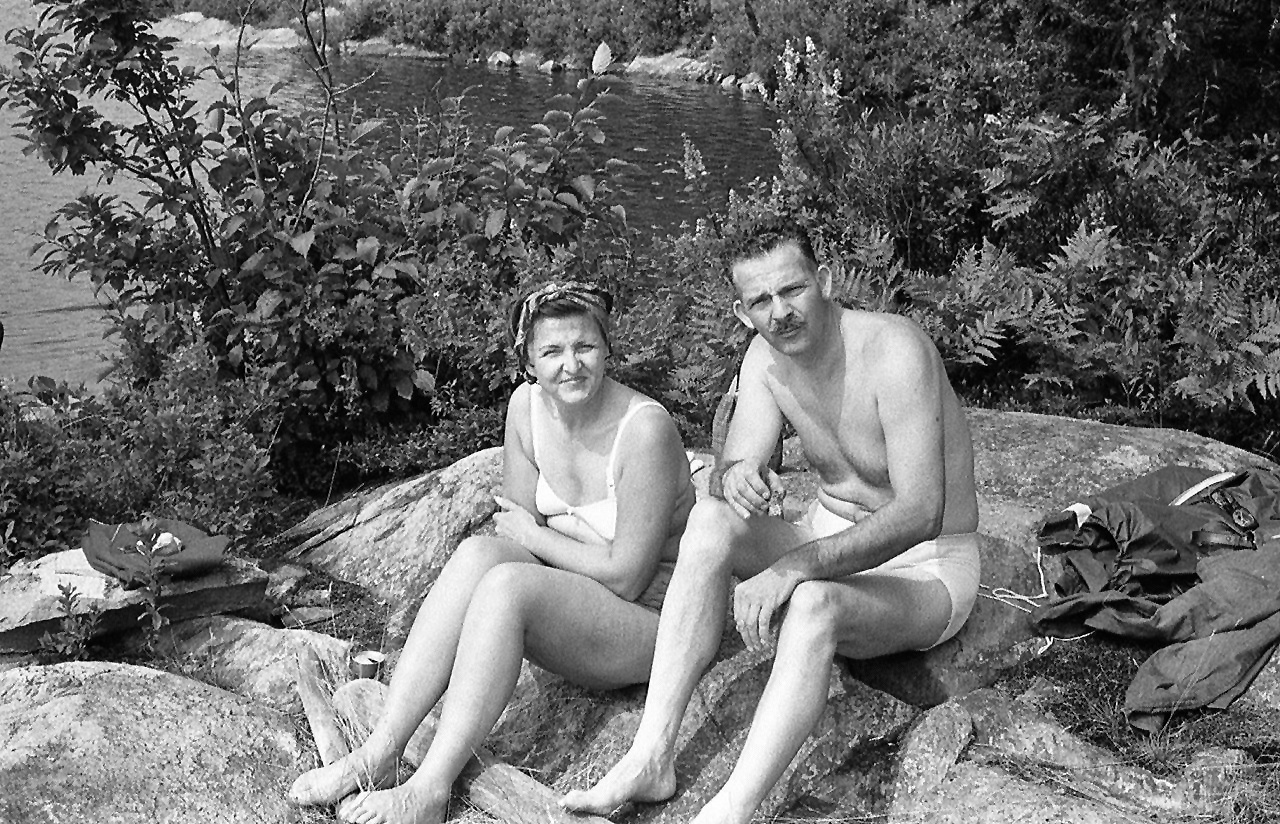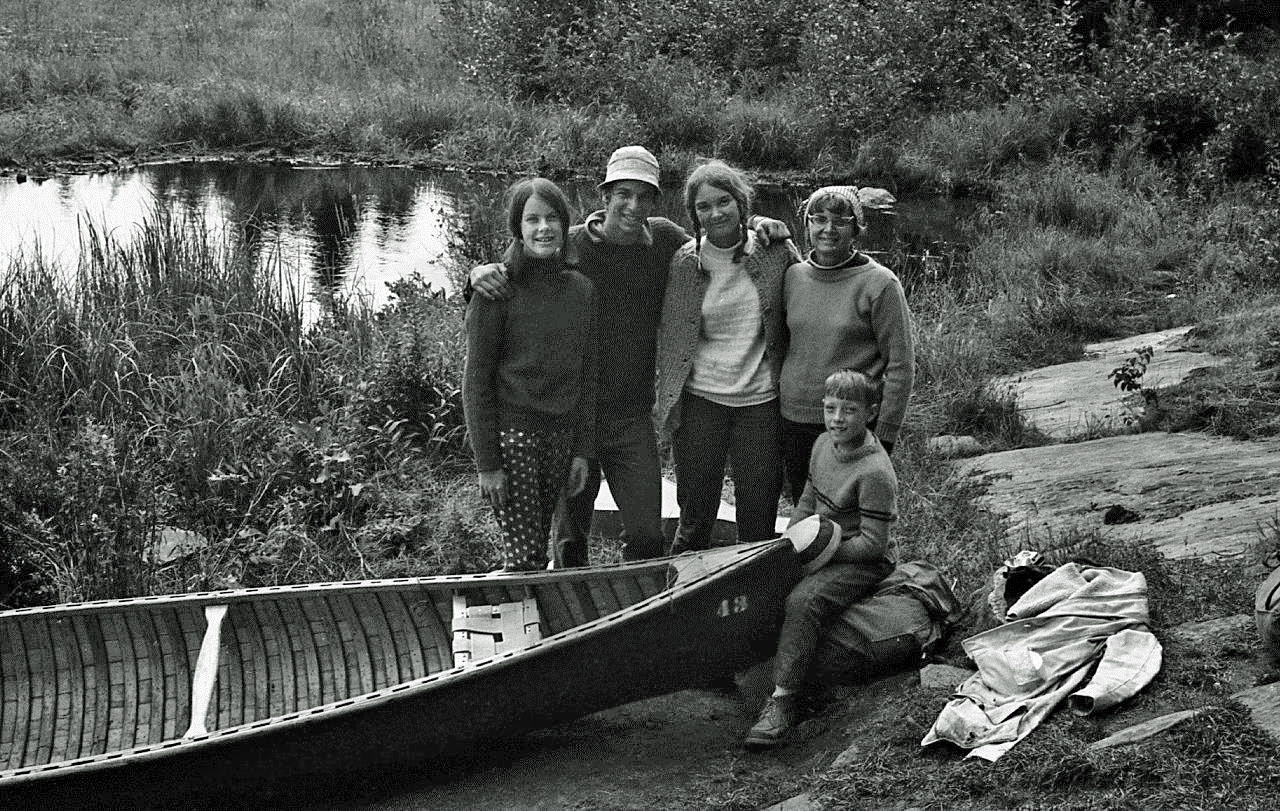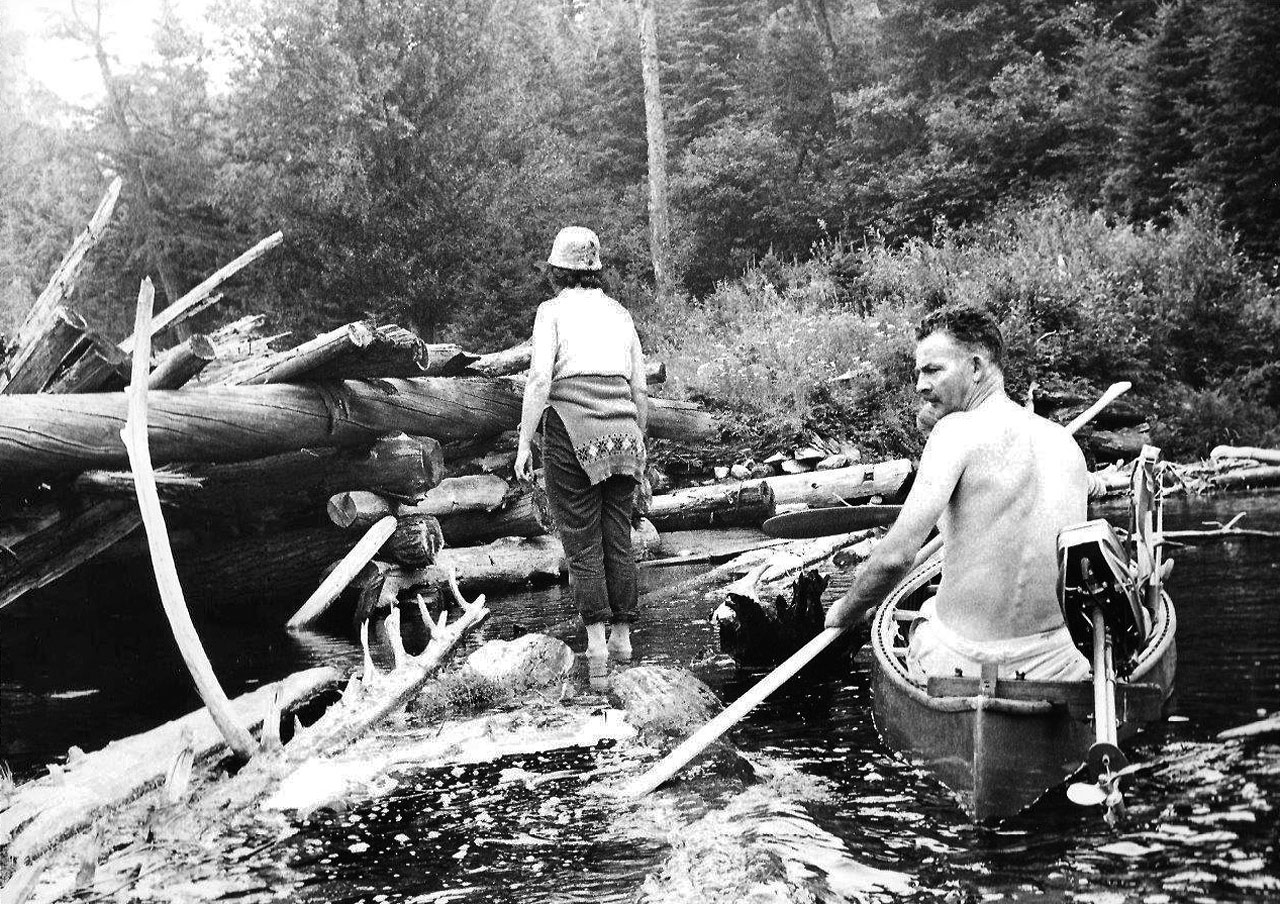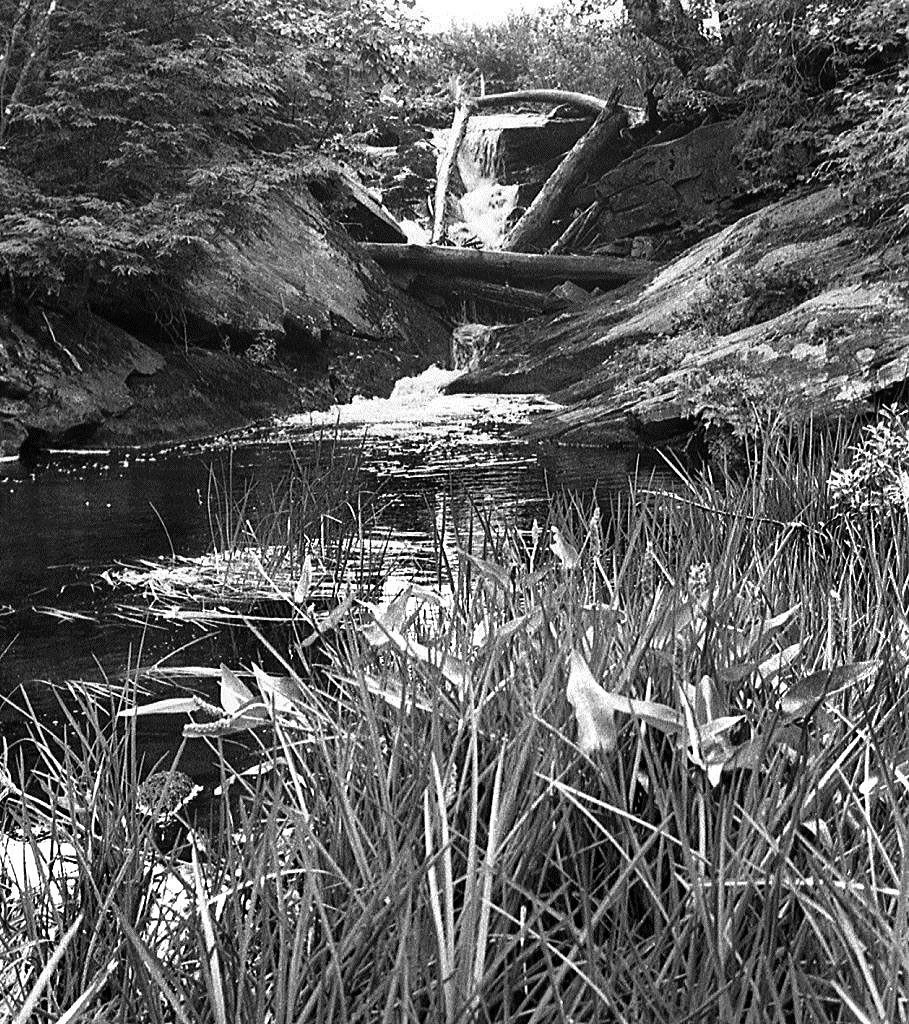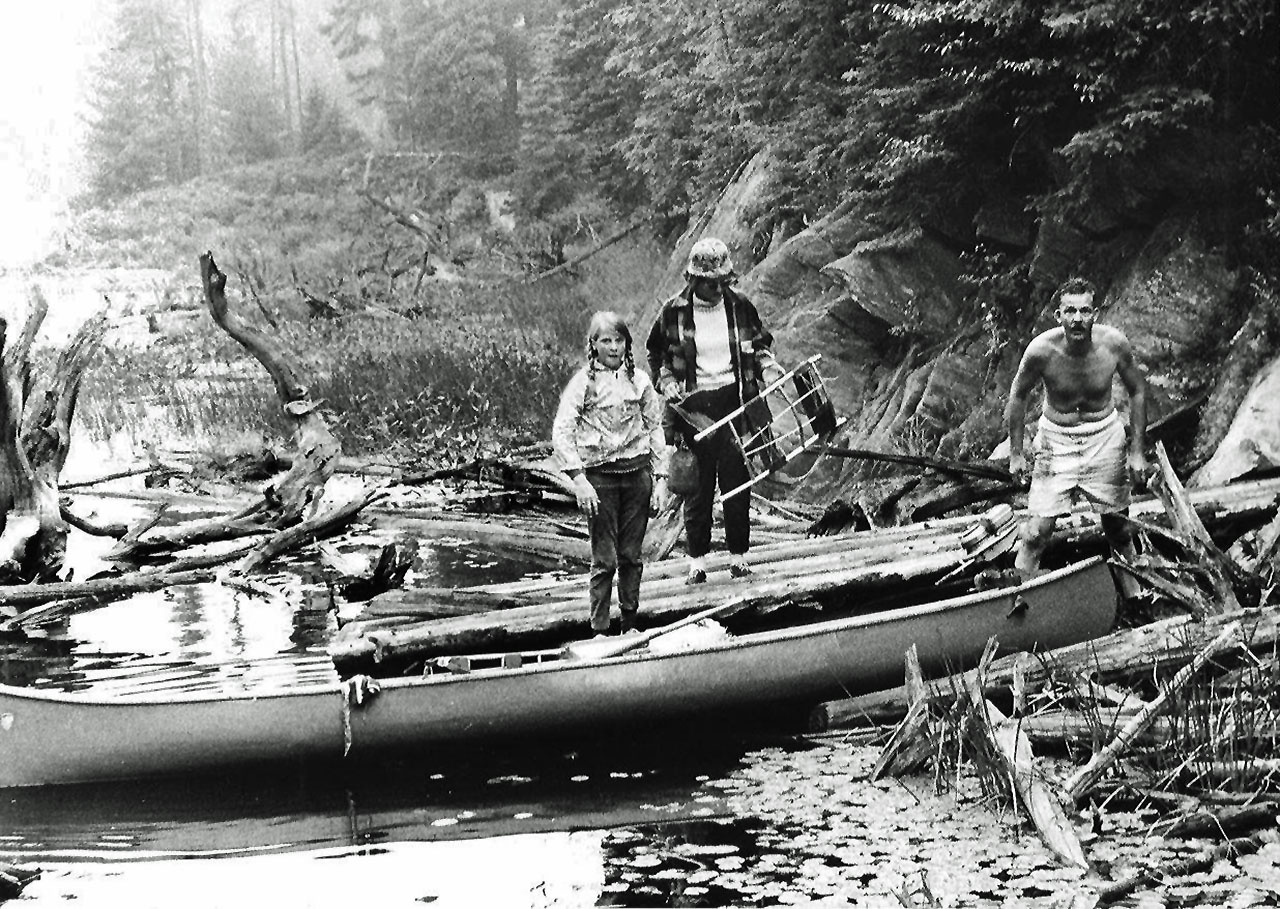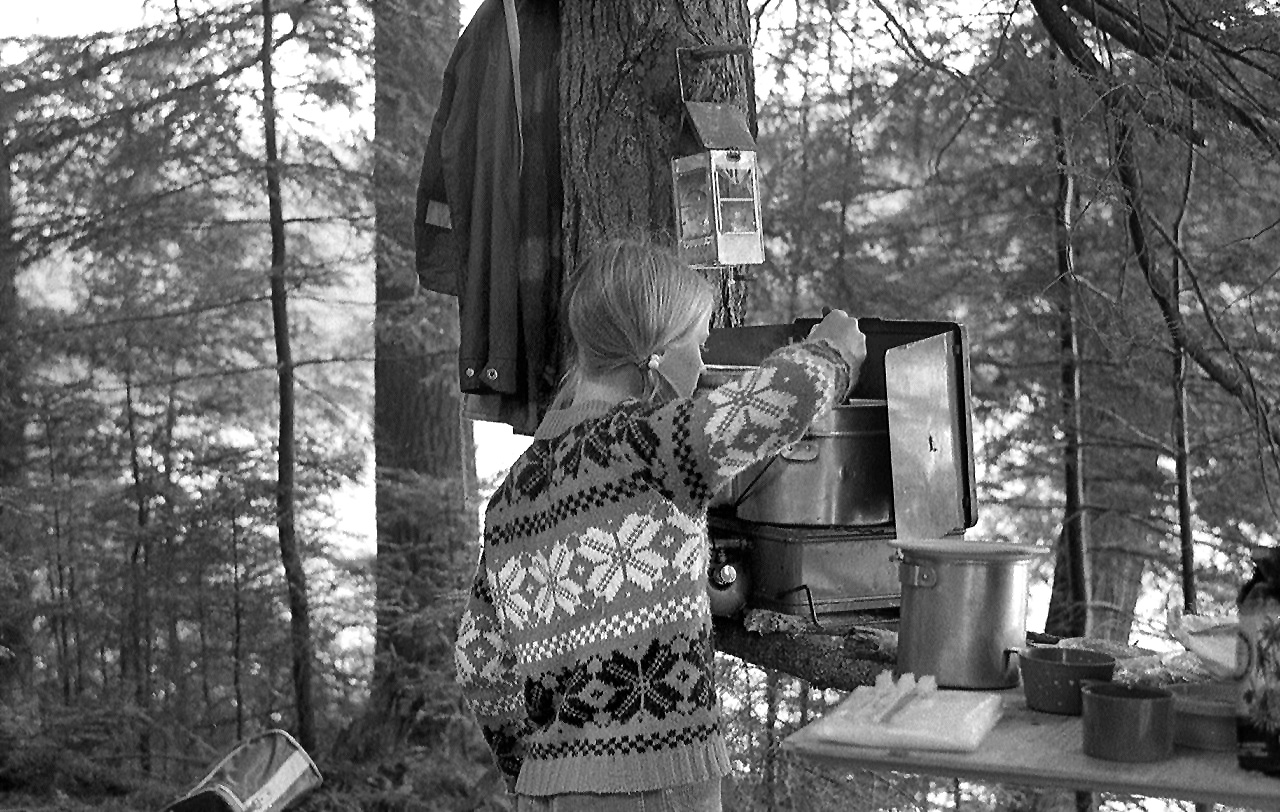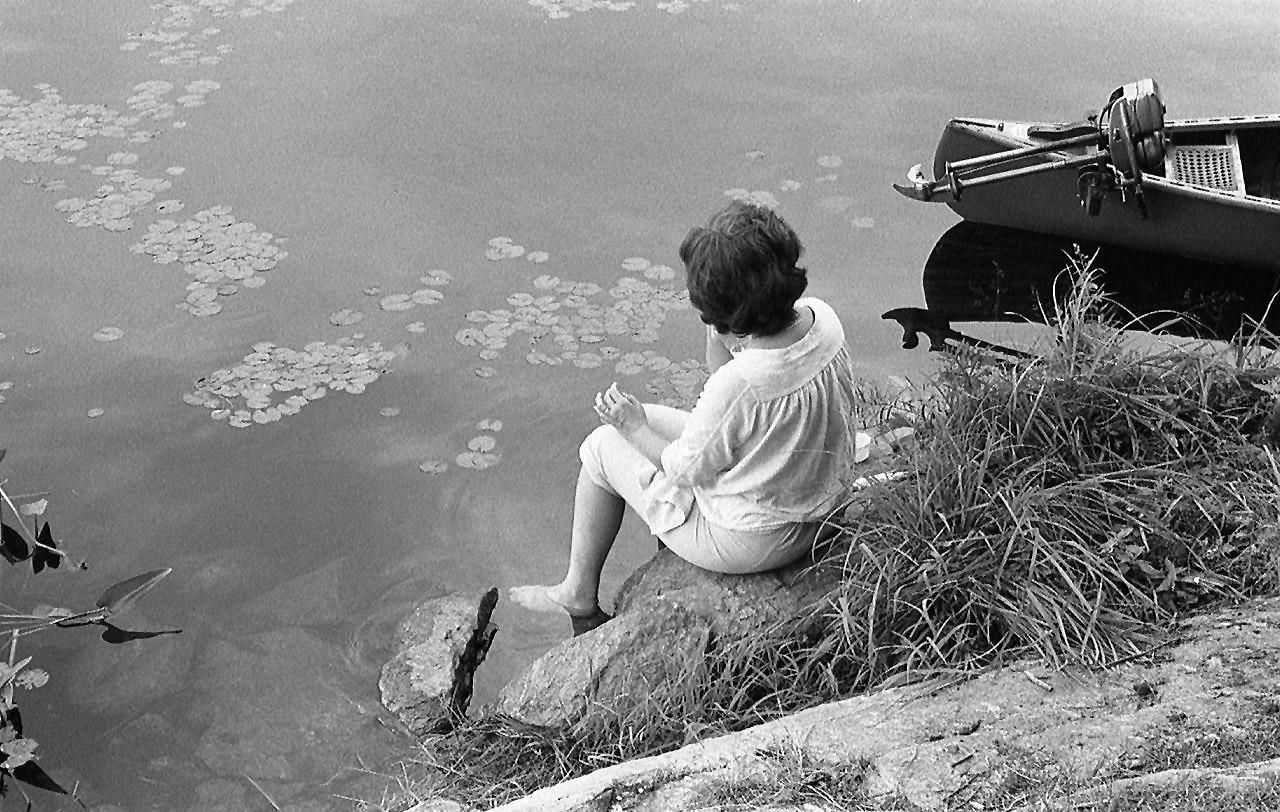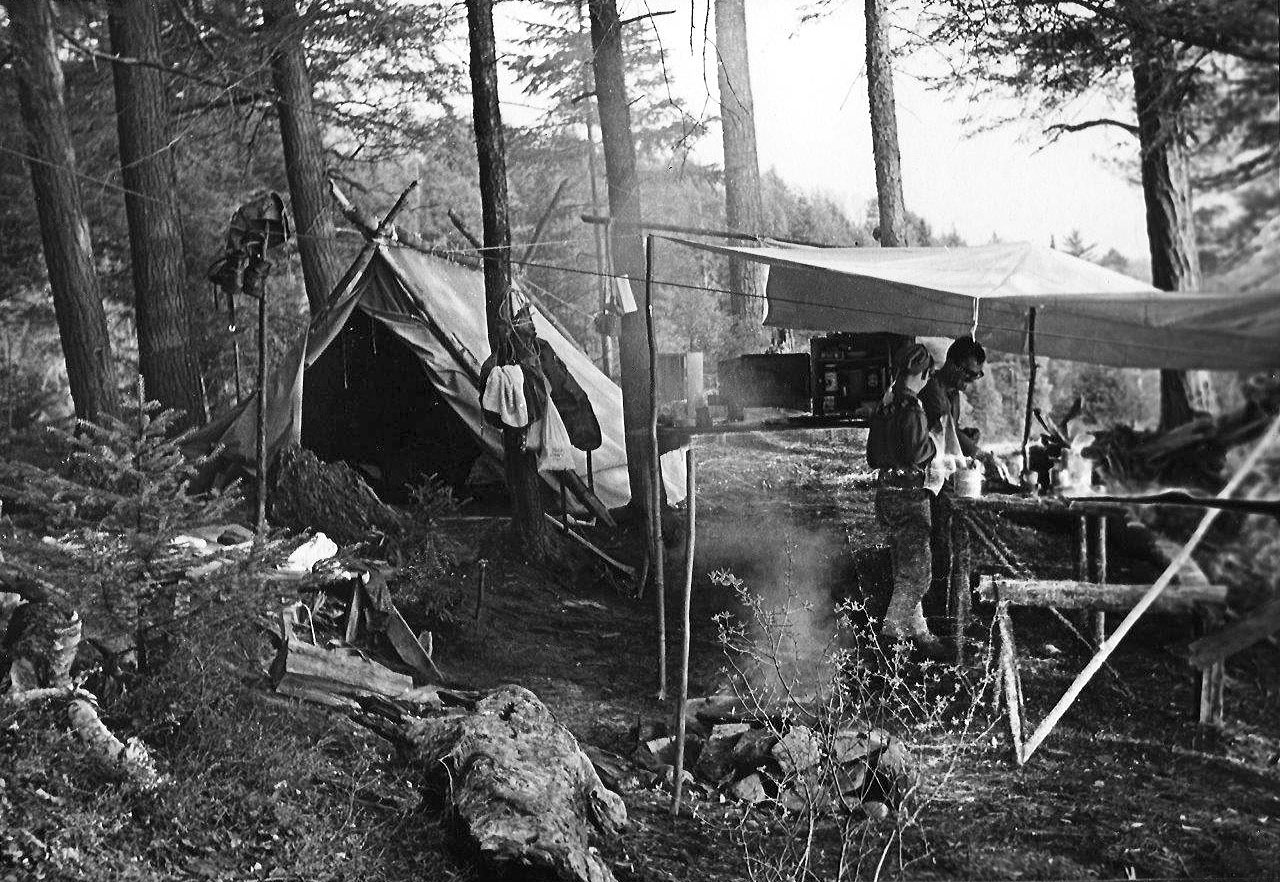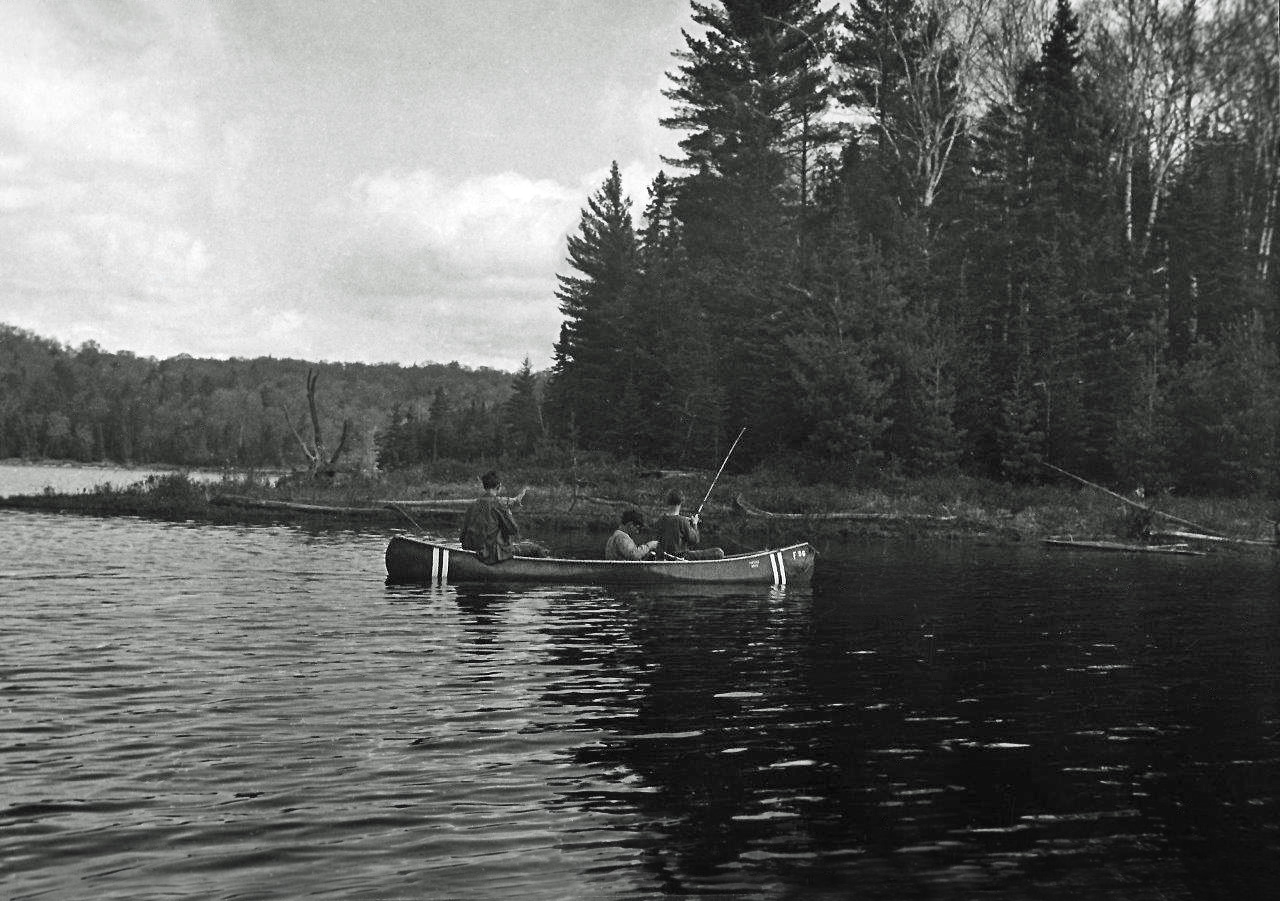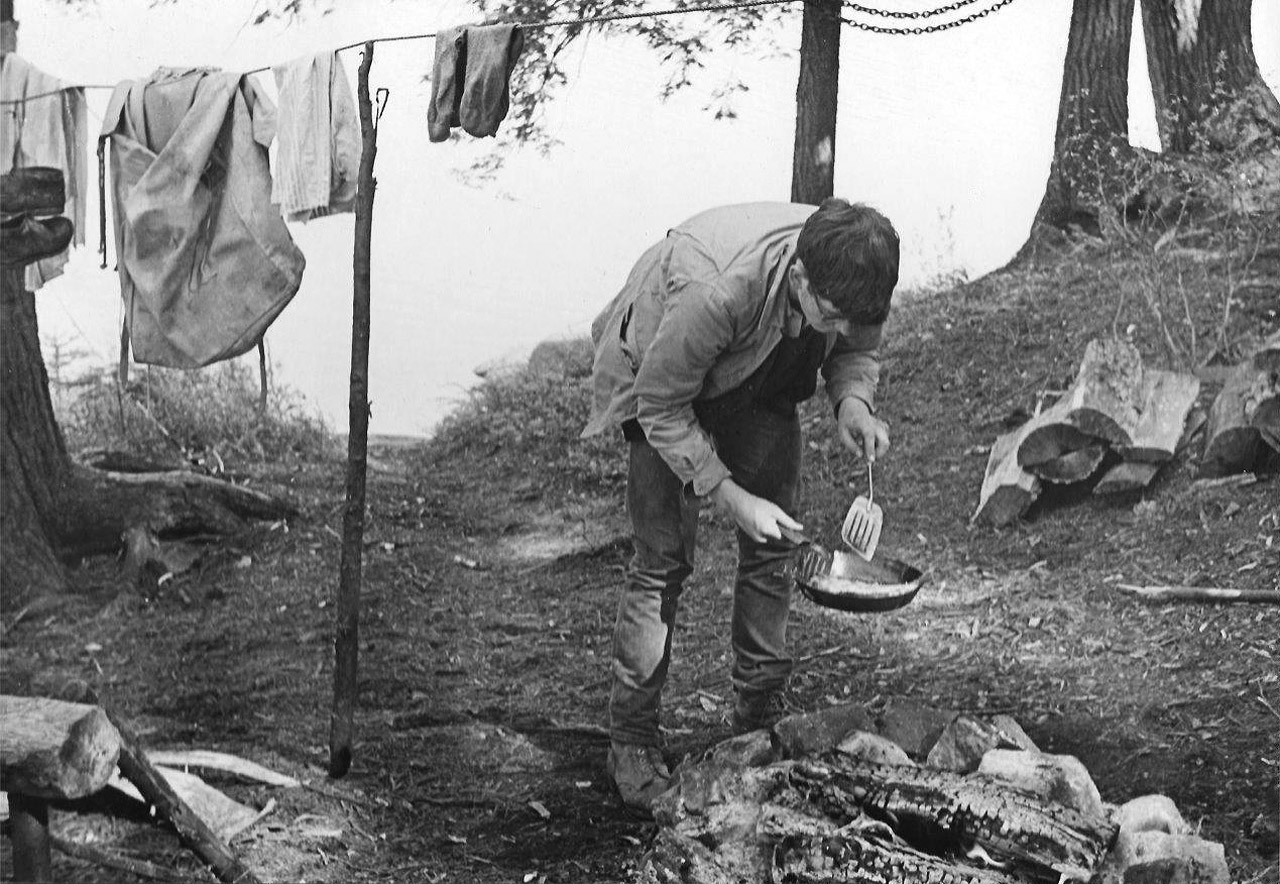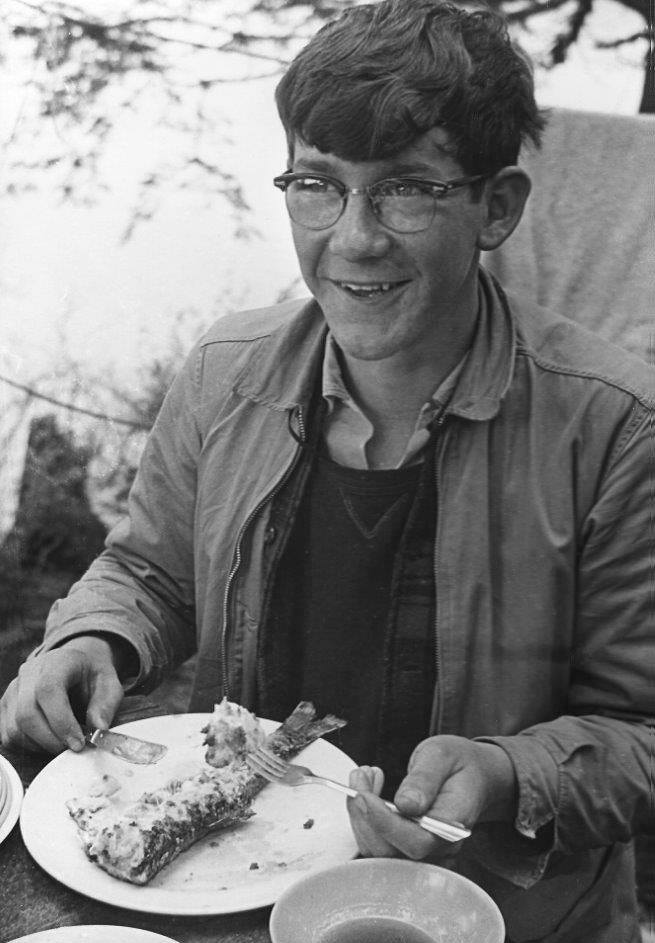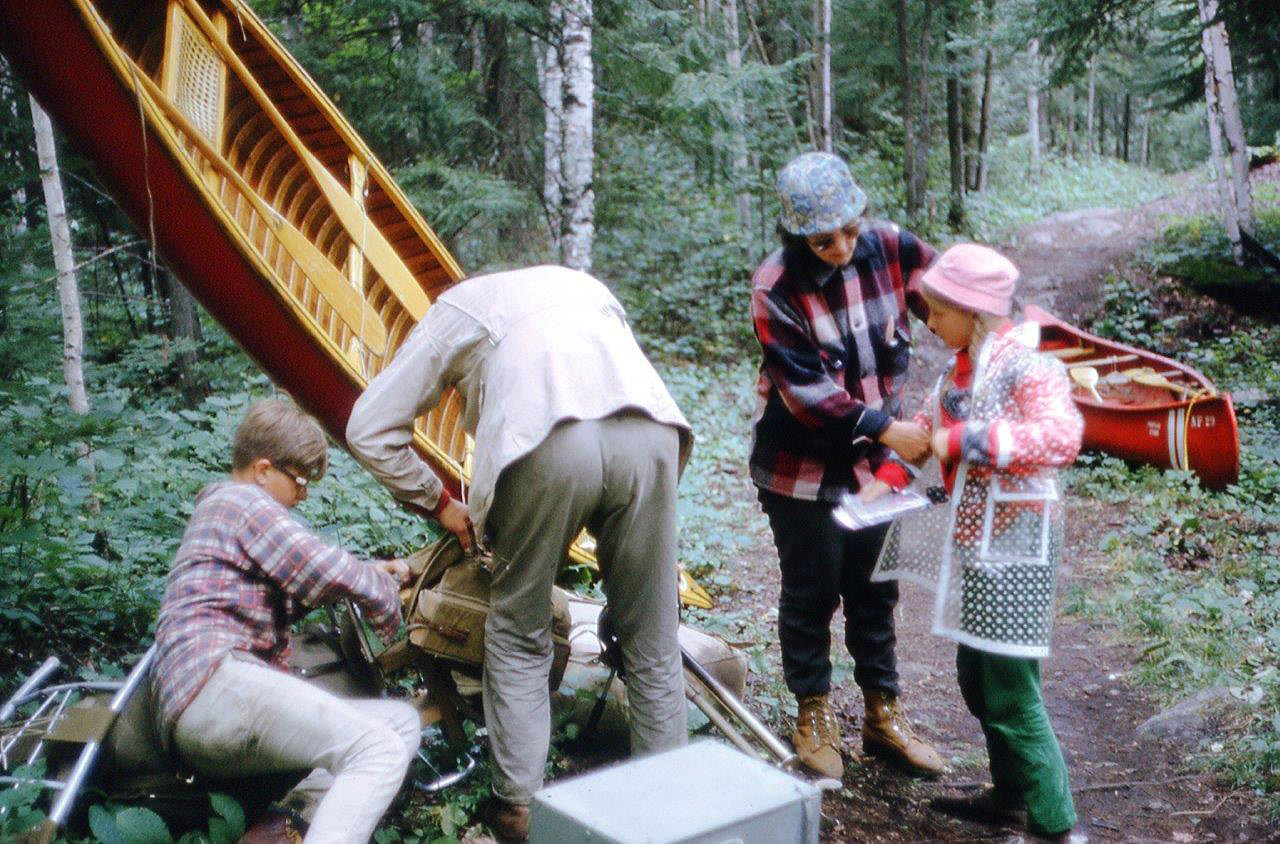INTRODUCTION: This article was transcribed in March of 2014, from the old faded black-and-white photocopy of a typed document originally written by the late Jim Kinnear (Sr.). Many of the photo images originally used, were subsequently available for use in this transcription in their original quality. A few were not available and as a result, references to the missing photos were omitted. This article is shared here for its retrospective heritage value.
The original photo images used in this transcribed article were provided by Jules Besseling, who participated in the two canoe trips to Misty Lake, the recollections of which were compiled into this article by Jim Kinnear. Since Jules took many more photographs than were used in the article, a number of his 'extra' photos have been included in this article's photo-appendix.
In this day of fast cars, fast boats, high-powered booze and women, our friends think we need our heads read when we say that we are embarking on a canoe trip. If they have any idea of what we speak, they usually say something like, “You mean portaging and all that stuff?”
“Indeed, that's exactly what we mean” we reply. They usually wonder off muttering to themselves. So when we see a spark of interest in young people we do not hesitate to kindle their interest and help them with advice and gear so that they can start off on their first canoe trip.
And so it was when we found that Jules, a friend of our boys let us know that he would like to come with us, and we started planning our third trip to Misty Lake, en famille.
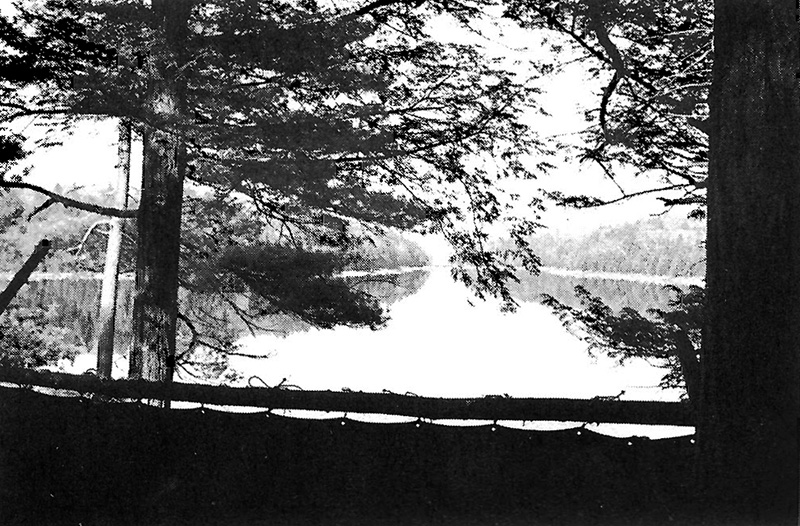
Shown above is our destination, an island in Misty Lake. Our snap looks out over the campsite to the narrows in the lake, crossed by a barely discernible log bridge, a relic of the days of logging.
The preparations necessary for a canoe trip which will be enjoyable for all members of the party, are quite extensive and take several weeks to complete. The object is to take a minimum of equipment necessary for maximum comfort. This will of course vary from person to person but we feel we have, after years of tripping, arrived at what we think is both the minimum and maximum for us.
So, we arrive on the appointed day at the Portage Store bright and early. This is the starting point for most trips since it is on the highway which runs through the corner of the park, and there is an outfitter there to complete the rental of any further equipment. We usually pick up our second canoe here. We try to be underway by 8:30 or so, which means we have left home about 5:00 AM there is usually some well concealed excitement for although all the children have been on many canoe trips, each one is a new adventure and a new challenge, and it would never do to show the excitement of starting off which we all feel. And anyway, we are all old hands at it.
This picture was taken on Canoe Lake. We permit ourselves the luxury of a tiny outboard which enables us to make our destination in one day by conserving our energy for the long portage ahead of us. With this fractional horsepower monster we tow the second canoe, using the motor only on the larger lakes. At the end of Canoe Lake we enter a small stream which leads to a dam holding back the water of Joe Lake. It is only a very short carry over this dam which we are able to complete in about 15 minutes, and we proceed northward into Joe Lake, Tepee Lake, Littledoe Lake and Tom Thomson Lake.
We race against our own schedule which we have evolved from previous trips, and we are right on time. This day turned out to be bright and sunny and very humid so we stopped for lunch and a swim in Tom Thomson Lake, just before coming to the start of the 2100 yard portage.
Since we could not spare the time to dig our bathing suits from the packs, we swam in our underwear which dried while we sat and ate our lunch of sandwiches and ice cold beer, all prepared the previous evening. This was the last of our luxuries.
Sometimes our friends seem to be overly concerned with privacy or the lack of it, and they find it difficult to believe that the lakes are inhabited only by a handful of campers in a few campsites. The only people who pass are others in canoes who also seek solitude. As one proceeds further into the park, there are fewer campers, and fewer dirty campsites.
There are a couple of very effective barriers which separate the serious trippers from the weekend-type of camper. One such barrier is the 2100 yard portage which takes you from Tom Thomson Lake over a height of land to Ink Lake. Many beginners will instinctively shy away from including such a long carry in their plans. However, with a little experience, know-how and stamina, together with the determination to find a secluded site, the barrier becomes a screen, on one side of which there can be found comparatively clean campsites, while on the other side there are usually much dirtier and more frequently occupied sites.
The ideal way to cross a portage, is in one carry. This becomes impossible when there are women or small children in the party, and it is then necessary to return to carry a second load.
In addition to our two 16 foot canoes, we had a portable wooden kitchen box of 65 lbs., a bread box of 12 lbs., three packs weighing 30, 48 and 75 lbs. .. and our motor of about 17 lbs. The two canoes weighed about 80 lbs each and we found that we could carry for about ¼ mile before having to stop for a few minutes rest.
We met a young French-Canadian law student who was working as a guide for the summer months, who had a party of 5 from Cleveland Ohio with him. His party had met with misfortune when the husband of the family had apparently broken his ankle in a fall, and had to be flown out by the department's plane. They were continuing their trip out when we met them at a beaver dam on the long portage, and are shown below.
With experience of this area behind us, and a schedule to follow, we completed the long portage in 3 hours. One section leads through a bog which, if there had been a recent rain, is difficult to negotiate even though over the years logs have been laid on the surface.
We noticed that new cedar logs had been recently cut and laid over the old, which made it considerably easier. Also, there had not been much rain and the level of water in the bog was not as high as we have seen it in some years. Even so, the ankle boots which we all carried were handy nevertheless.
This day, as previously mentioned, was particularly hot and humid, causing all of us to dry out considerably during the 3 hours we spent on the trail. So the few tins of beer and pop which we carried with us never tasted so good.
Ink Lake, at the end of the portage, is a very small round lake surrounded by muskeg and blueberry bushes. At the opposite side is the outlet, a very narrow stream which winds slowly onward and empties into McIntosh Lake. The outlet is difficult to locate until one is almost upon it, as the land around it is very low and uniform. The stream itself, partly raised by a beaver dam is, at best, ten feet in width and, and for most of its mile length is seldom over a foot in depth.
There is much wildlife to be seen in this area, especially if one proceeds as quietly as possible. Blue herons flop awkwardly into the air. Beavers, muskrats and sometimes otters may be observed in the leads off the main channel. And often, the crashing of dead tree branches will identify a moose stomping through the underbrush.
It takes an hour to an hour and a half to follow the meandering stream into McIntosh Lake, which is a very pretty lake, with several islands scattered throughout. We paddle through it however, to the northwest corner where a portage of about ¼ mile takes us into Timber Wolf Lake.
Landing here was a little easier than at some portages, for logs have been laid to stand on while unloading the canoes. Our packs are, we think, well designed, and though fairly heavy are not tiring to carry over short distances, especially if the tumpline is used.
Keith tried the little outboard strapped to a pack. Although it was not very heavy, it did prove to be an awkward arrangement, and we returned to Debbie the chore of carrying the motor, for which we had a special rack.
Not being in the best of physical condition, we found that the act of lifting and placing a canoe on one's back required about the same energy as carrying it a quarter mile. So we learned that it was easier to have someone hold up one end of the canoe to get under than to lift it and walk off with it.
Another practice we adopted for lengthy portages was to carry all gear up to a certain point, and then move on, rather than try to carry any one item to the end of the trail and then walk back for another pack. This not only saved time, but enabled us to rest between short carries.
Leading in Timberwolf Lake was effected rapidly by 4:45 PM and we continued in a northwesterly direction. There are the remains of an ancient logging camp at the point where Timberwolf Lake exits into a marshy area. A decrepit logging bridge crosses here, and it used to be necessary to lift everything over the bridge, for it had long since crumbled and become impassible.
However, a way has recently been cut through one of the spans, considerably facilitating passage. It was still necessary though to weave one's way through a maze of floating trees which blocked the entrance. Shown below, Catherine is about to start pushing a floating tree aside to enable us to enter. She is up to her ankle, standing on a tree.
The channel, down which we found ourselves passing, gradually became more shallow as it became choked with lily pads. The water levels were down considerably and at one point we found ourselves in only a few inches of water. This stream goes over a beautiful falls into Misty lake, necessitating a short but steep portage.
We put our canoes into Misty Lake at the base of the falls. There was very little water coming over the falls and the level of Misty Lake was also low.
The picture below gives some idea of the wilderness nature of the area to be traversed, and while it may increase the hardship involved, it also increases the beauty of the area.
From this point to our island campsite was only a matter of a couple of miles, and we are still on schedule. The children now start to speculate, “What if someone is camped on 'our' island?” Of course this is a chance you take, and sure enough as we approached the island we could see that there was a party there.
However, they said they were leaving in the morning, so we decided to camp on the opposite side of the island, returning to the preferred side when it had been vacated.
We knew that we would have to construct makeshift facilities, but there was no alternative, and it was approaching 7:00 PM.
Debbie is attending to the supper above on the gas stove which we usually but not always carry with us, while below, the lily pads are seriously contemplated.
'Our' campsite has two tables, discarded logging camp doors, long abandoned but now performing a most useful function. On two sides of one of these is a fallen tree, fashioned to serve as a bench and capable of seating 6 people.
On the other table, the kitchen box is mounted together with the stove. Close by is the fireplace, and there are two level areas for tents.
The chief pastime is of course fishing, which is not good in Misty Lake, but that certainly deters no one from trying. There are times, as these pictures show, where even the experts are confounded.
|
What is happiness? Happiness is when the frying pan is hot, and you can pop your fresh caught catch right into it. The results are obvious! |
One year on this same island campsite, we had spent six days without seeing another person. Not a single canoe went by in either direction leaving only a large family of loons for company. Their drawn-out cries in the stillness of night could be heard for miles adding to the feeling that one was entirely alone. Sometimes, if luck was with you, you might come across a deer in the middle of the lake, usually at dusk. They are strong swimmers, and an idle paddler would not keep up with them.
If we remain for more than a day or two on one site, we always manage to keep busy improving the site one way or another. The nails which we bring are handy to brace up a wobbly table, or help to construct a new one ; the collapsible shovel for ditching around the tent can also be used as a pick to level the tent site; and the swedish saw is invariably put to good use. One year six of us spent an entire day constructing a canal in the Petawawa River so that a loaded canoe could be floated up or down stream through the canal by walking beside it. This simply entailed moving rocks around, making small side weirs to deflect the water into the main channel, and in short, improving the portage by shortening the length of the carry.
The smooth rock shown above is immediately below the island campsite. If the water is smooth, the canoe can be brought right alongside and unloaded directly on its flat surface. It also serves as the swimming pool, and there is 7 feet of water straight down. At night with a flashlight all sorts of underwater life can be spotted.
One evening we all sat watching the sun set in a beautiful array of vivid colour with the clouds brilliantly etched by almost constant lightning in the distance. We watched the display for several hours as the storm approached slowly from the west, and had ample warning to batten down all loose gear, see to our tent fastenings, and generally prepare for the onslaught. It was not long in coming but by then we were all tucked in, and remained dry and comfortable through the night.
Returning home was nearly always accomplished in one day, and preparations started the night before for an early departure. We went back by the same route we had come, and because our packs were lighter, we were able to better our times over the portages. This time we sped over the long portage in 2 hours and twenty minutes.
The group picture above was taken on one of the rest stops along the long portage. The canoe was propped in the crotch of a tree while the remainder of the group comes up. Then everyone tries to convince everybody else how easy their own last carry was and gradually they convince themselves that they are ready to proceed.
And so another trip ends without mishap.
More photographs were taken than were used in the article and are available in a photo-appendix.
